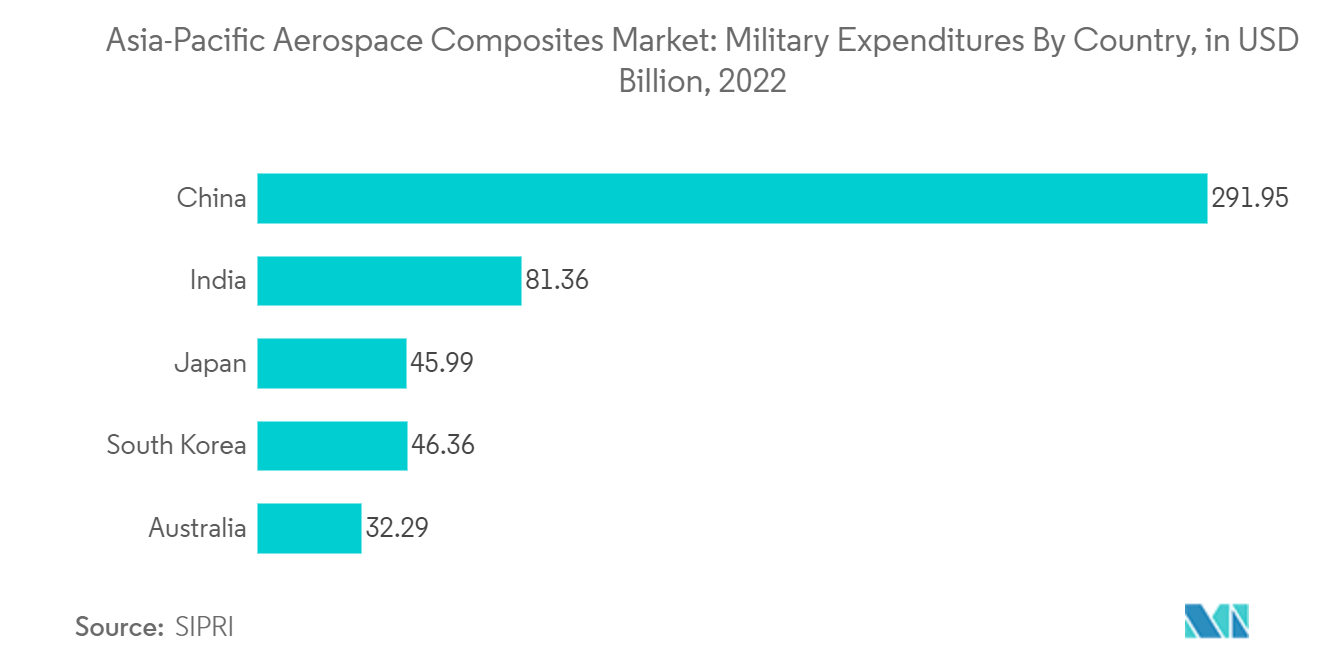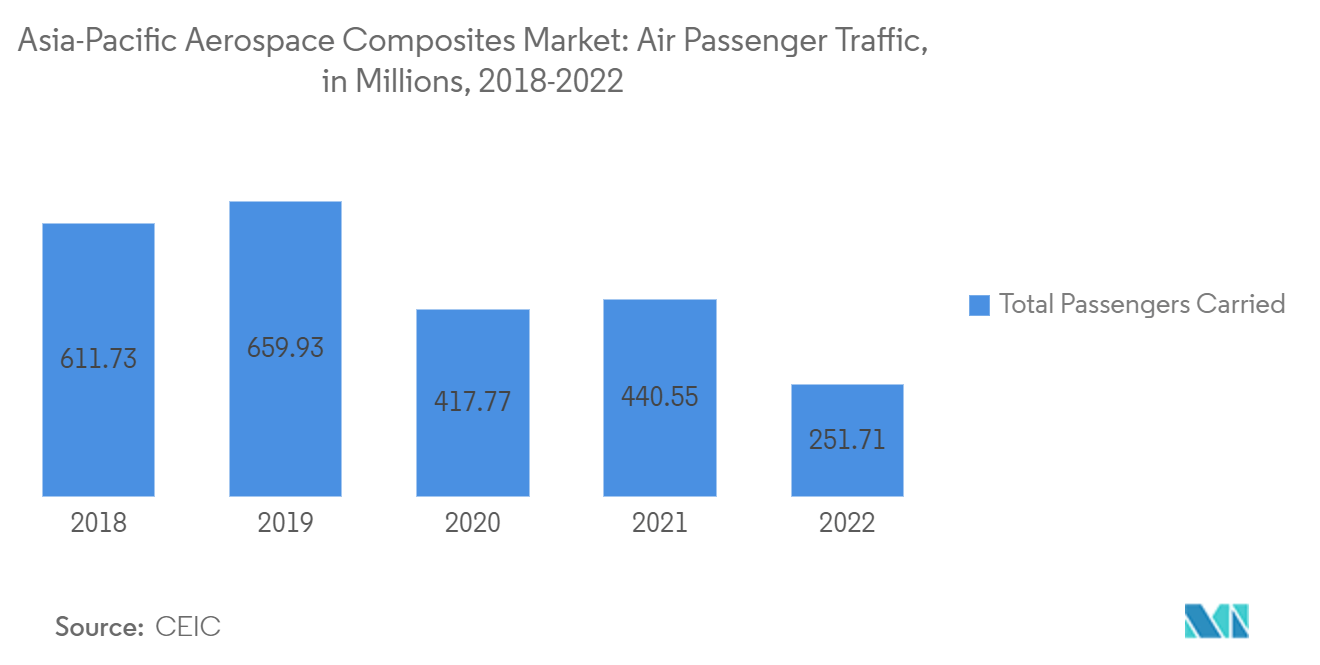Market Trends of Asia-Pacific Aerospace Composites Industry
Military Aviation is Expected to Dominate the Market During the Forecast Period
The military aircraft segment is expected to be driven by the growth in the adoption of composites in various parts and components of the newer generation of military aircraft. The composites used in military aircraft are lightweight, durable, and chemical and temperature-resilient. An important use of composite materials is in the development of stealth aircraft that use radar-absorbing composite materials to form most of the aircraft’s structure. Carbon- and glass fiber-reinforced plastic laminates are used in Lockheed Martin F-35 Lightning II in structures, like vertical stabilizers, tail, flaps, and wings’ skin, that account for approximately 40% of the weight of the aircraft. For instance, in January 2023, BAE Systems Australia secured a new contract with Lockheed Martin to activate an F-35 Asia-Pacific Regional Warehouse at its Williamtown aircraft sustainment operations in regional New South Wales. Also, in February 2023, Singapore announced that the country would purchase eight additional F-35B Lightning II fighter jets on top of the four for which a deal was signed in 2019. The announcement indicates that the F-35s are rapidly proliferating in China’s neighborhood. Thus, the growing use of composites in the newer generation of military aircraft and the increasing procurement of such aircraft are currently driving the growth of the military segment.

China to Hold the Largest Market Share in the Market During the Forecast Period
China holds the largest share of the market during the forecasted period. Globally, China is one of the fastest-growing aviation markets. In 2022, commercial airports in China handled over 2,511 million passengers, compared to 440 million passengers in 2022. The growth in the aviation market is generating demand for new aircraft by the carriers in China. As most of the newer generation aircraft use composites in various aircraft parts, the demand for the same is expected to increase. In July 2020, Airbus confirmed receiving orders from Air China, China Eastern, China Southern, and Shenzhen Airlines for a total of 292 A320 family of aircraft, demonstrating the positive recovery momentum and prosperous outlook for the Chinese aviation market. The A320 airframe includes composite materials and aluminum alloys to save weight and reduce the total number of parts to decrease maintenance costs. Also, in March 2023, the Tianjin-based final assembly facility commissioned a composites-intensive A321neo for Juneyao Air. All these factors are expected to boost the country's market prospects during the forecast period.


